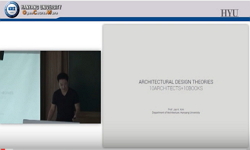Throughout history, buildings have been interrelated with certain indigenous characteristics such as regional climate, culture and religions. In particular, the control of regional climate has been primarily a concern for compatibility with nature. In...
http://chineseinput.net/에서 pinyin(병음)방식으로 중국어를 변환할 수 있습니다.
변환된 중국어를 복사하여 사용하시면 됩니다.
- 中文 을 입력하시려면 zhongwen을 입력하시고 space를누르시면됩니다.
- 北京 을 입력하시려면 beijing을 입력하시고 space를 누르시면 됩니다.

A Study on Architectural Design Factors for Tall Office Buildings with Regional Climates based on Sustainability
한글로보기https://www.riss.kr/link?id=A106321649
- 저자
- 발행기관
- 학술지명
- 권호사항
-
발행연도
2005
-
작성언어
English
- 주제어
-
등재정보
KCI등재
-
자료형태
학술저널
-
수록면
13-21(9쪽)
- 제공처
- 소장기관
-
0
상세조회 -
0
다운로드
부가정보
다국어 초록 (Multilingual Abstract)
Throughout history, buildings have been interrelated with certain indigenous characteristics such as regional climate, culture and religions. In particular, the control of regional climate has been primarily a concern for compatibility with nature. In our modern age, technologies to control climate have been successfully developed in architecture but the consumption of large quantities of natural resources can also produce environmental problems. This study is based on the proposition that this negative trend can be minimized with architectural design that is motivated to coexist with a regional climate. This study develops these design strategies for tall office buildings by analyzing various combinations of building design configurations based on regional climates. The objective is to determine the optimum architecture of tall office buildings during the initial design process that will reduce energy consumption for regional climatic conditions. The eQUEST energy simulating program based on DOE-2.2 was used for this comparative analysis study of the energy use in tall office buildings based on architectural design variables and different regional climates. The results are statistically analyzed and presented in functional architectural design decision-making tables and charts. As a result of the comparison of architectural design consideration for tall office buildings in relation to regional climates, buildings physically need less energy consumption when the architecture is concerned with the regional climate and it produces a more reasonable design methodology. In reality, imbalanced planning which is architectural design's lack of regional characteristics requires additional natural resources to maintain desired comfortable indoor conditions. Therefore, the application of integrated architectural design with regional nature should be the first architectural design stage and this research produces the rational. This architectural design language approach must be a starting point to sustaining long-term planning.
동일학술지(권/호) 다른 논문
-
An Investigation about Housing Attitudes of Korean Residents in American Apartment Houses
- 대한건축학회
- Mi Sook Yim
- 2005
- KCI등재
-
- 대한건축학회
- Jong Soo Cho
- 2005
- KCI등재
-
- 대한건축학회
- Seung Hoon Han
- 2005
- KCI등재
-
A Conceptual Framework for Comprehending the Spatial and Communication Layers in R & D Laboratories
- 대한건축학회
- Uoo Sang Yoo
- 2005
- KCI등재




 ScienceON
ScienceON







